轻型载货汽车车架三维设计(含CATIA三维图)

轻型载货汽车车架三维设计(含CATIA三维图)(论文说明书17000字,CATIA三维图)
摘 要
车架是载货汽车的主要承载件,安装着发动机、传动系、转向系、悬架、驾驶室、货箱等有关部件和总成,承受着传递给它的各种力和力矩。
本设计的课题是轻型载货汽车车架三维设计。所设计的车架的结构形式是前后等宽的边梁式车架,纵梁的截面形状采用槽形,纵梁与横梁采用铆接的方式连接。设计的主要内容包括:车架总体形式的设计、车架横梁与纵梁结构及其连接形式的设计、车架各部件主要参数的确定、车架的计算、车架的三维建模等。
在计算时把车架简化成静定结构的简支梁,然后运用材料力学的知识对本车架进行强度计算,并且确保车架纵梁的断面尺寸满足应力要求。
关键词:轻型载货汽车 车架 三维设计
Three-dimensional design of light truck’s frame
Abstract
The frame, as the most important part of a truck, supports some accessories such as engine, transmission system, steering system, suspension, cab and container. It bears all kinds of stress and moment.
The subject of the design is three-dimensional design of light truck’s frame. The structure of the frame that is designed is the side frame with the same width, in which the shape of longitudinal beams is slot. Longitudinal and cross beams are connected by rivets. The main contents of the design include: determination of the general structure of the frame, determination of beams’ structure and their connection form, determination of main parameter of frame parts, the calculation of the frame and the three-dimensional modeling of the frame. [资料来源:http://www.doc163.com]
The frame will be simplified as a simply supported beam of statically determinate structure when calculating. Then calculate the stress with the knowledge of the mechanics of materials and ensure the section size of the longitudinal beams meets the requirement of stress.
Key Words: Light truck; Frame; Three-dimensional design
设计内容
轻型载货汽车三维设计的设计内容包括以下几个方面:
1. 车架总体结构形式的设计;
2. 车架横梁与纵梁结构及其连接形式的设计;
3. 车架各部件尺寸参数及其材料的确定;
4. 车架的强度、刚度的计算校核;
5. 车架的三维建模设计。
本设计的参考车型为五十铃牌QL1040HEAR轻型载货汽车,其具体参数如下所示:
表3-1 参考车型参数表
产品商标 五十铃牌 车辆名称 轻型载货汽车
发动机型号 4KH1-TC 发动机排量 2.999 L
发动机功率 96 kW 外型尺寸(长/宽/高) 4800×1805×2160 mm [资料来源:http://www.doc163.com]
货厢(长/宽/高) 3100×1600×380 mm 总质量 3660 kg
载质量利用系数 0.759 整备质量 2080 kg
额定载质量 1450 kg 额定载客 2
前排乘客 2 接近角/离去角 24/20
[资料来源:www.doc163.com]
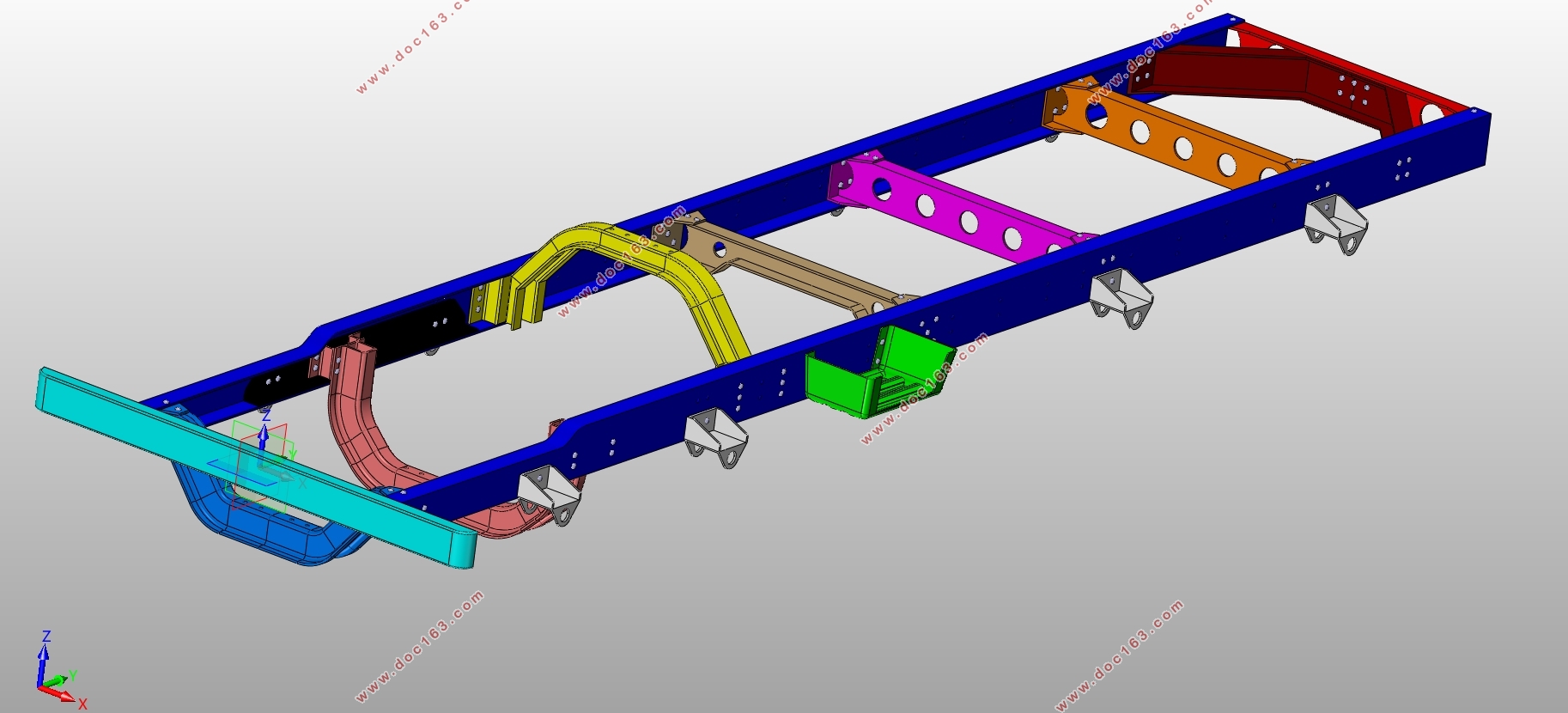
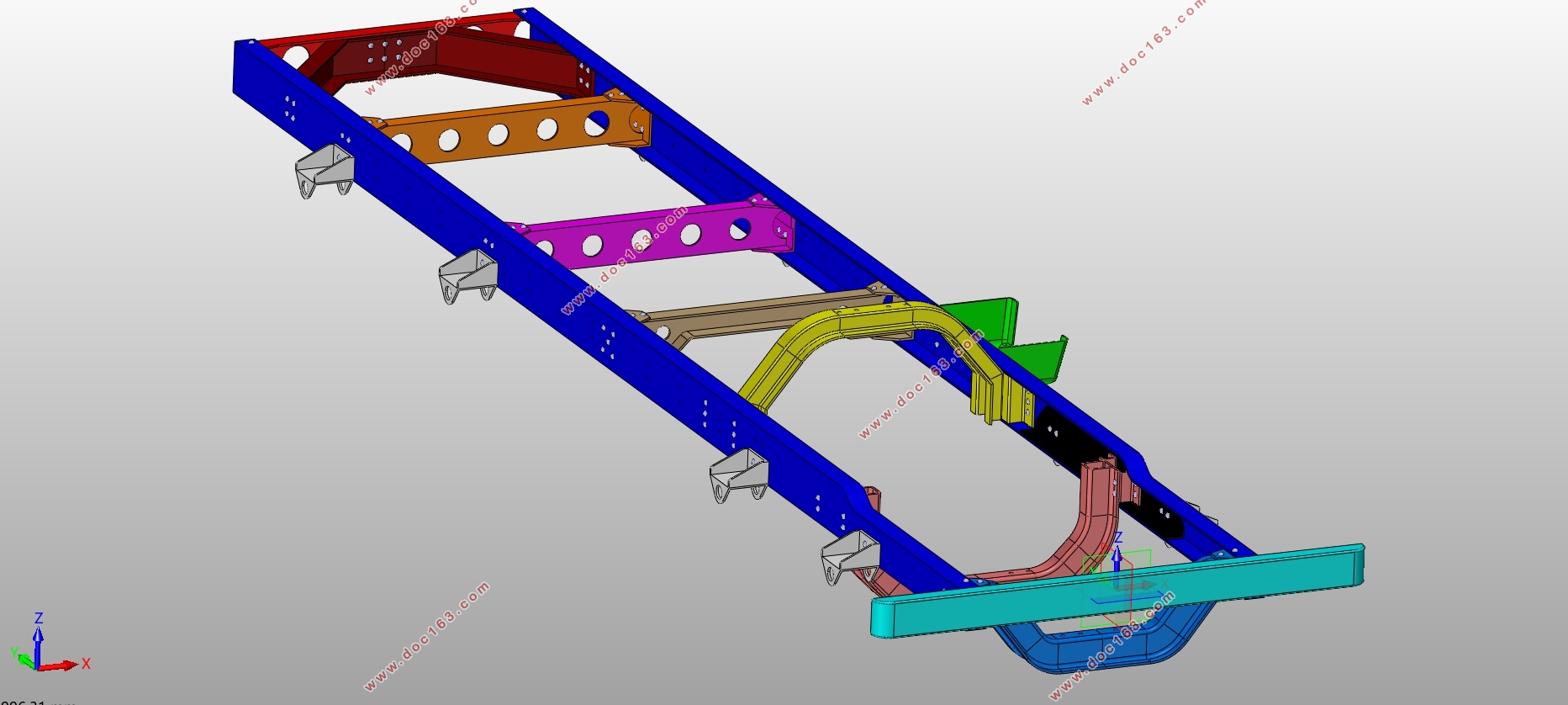
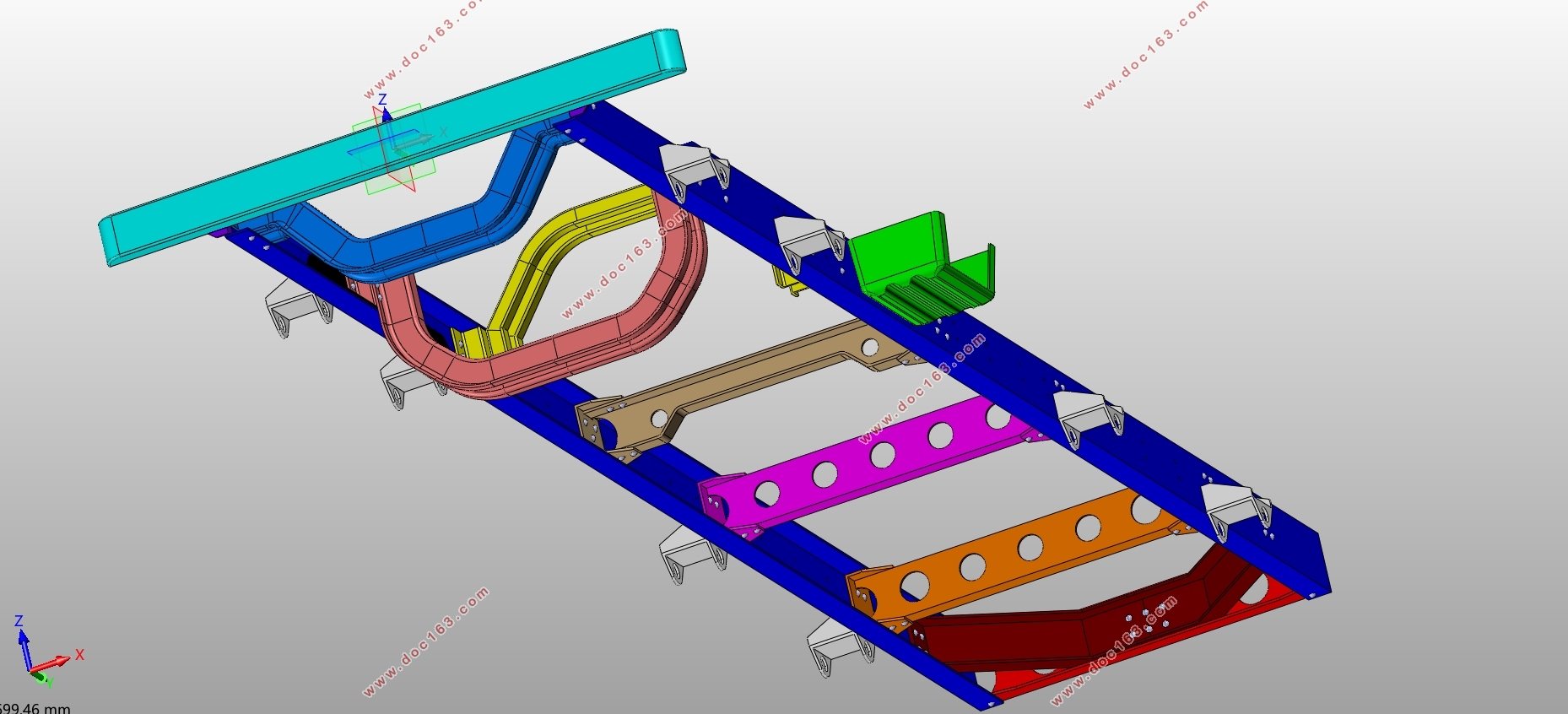
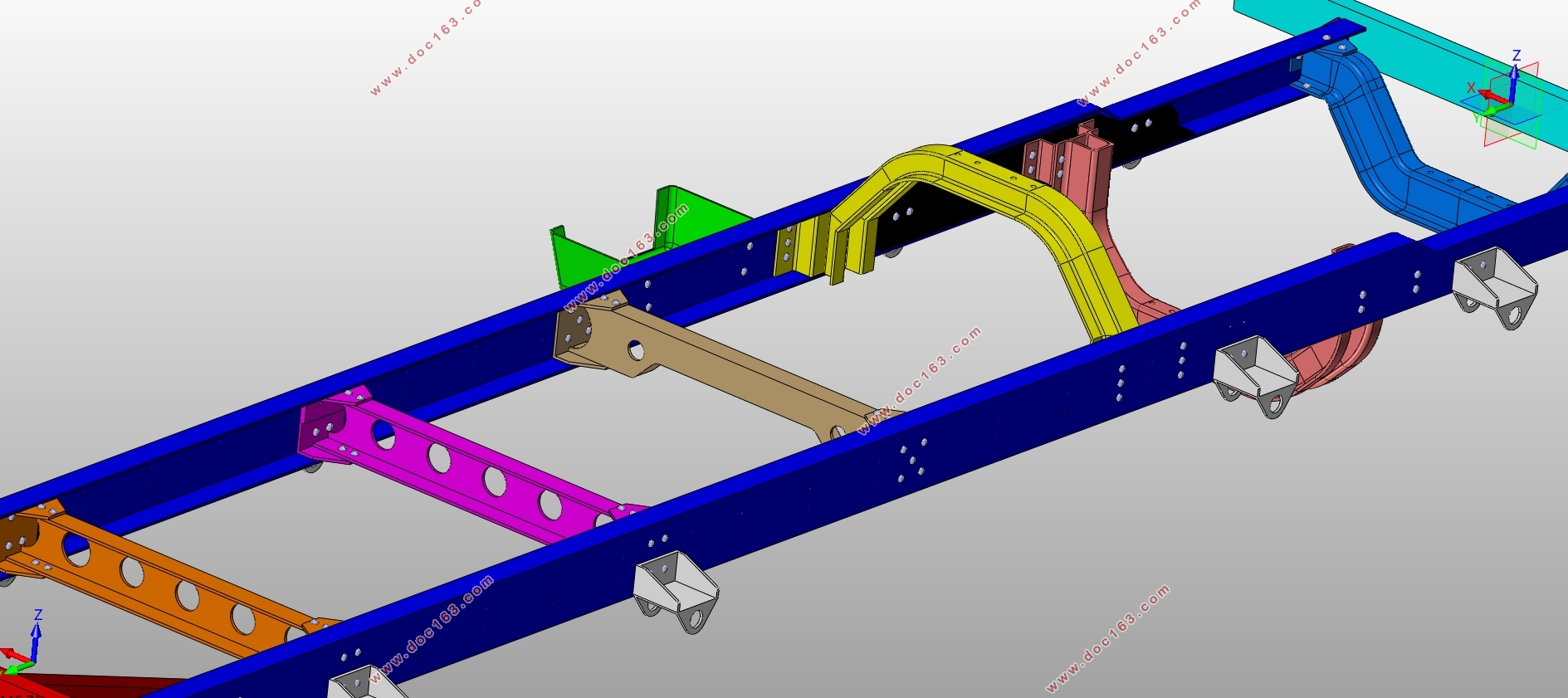
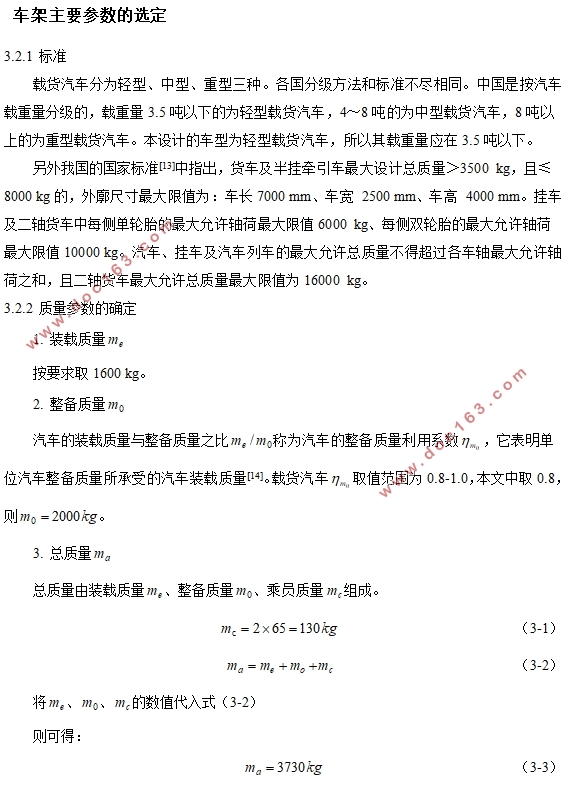
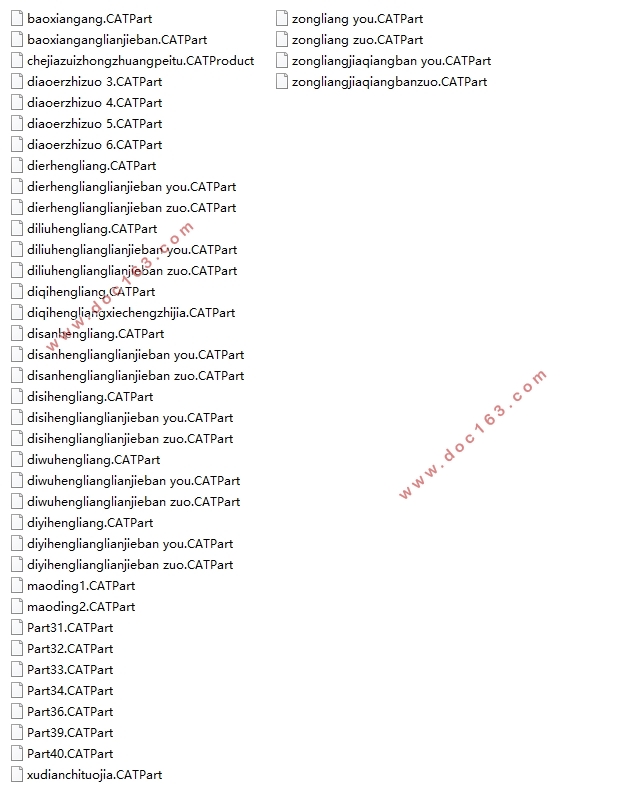
目 录
摘 要 I
Abstract II
第一章 绪论 1
1.1 课题背景 1
1.2国内外研究现状及发展 1
1.2.1 材料方面 1
1.2.2 结构方面 1
1.2.3 有限元技术的应用 2
第二章 设计方案论证 3
2.1 车架的设计方案 3
2.1.1 边梁式车架 3
2.1.2 周边式车架 3
2.1.3 X型车架 4
2.1.4 脊梁式车架 5
2.1.5 综合式车架 5
2.1.6 车架总体结构的选择 5
2.2 车架的技术要求 6
2.2.1 有足够的弯曲强度 6
2.2.2 有足够的扭转刚度 6
2.3 设计内容 6
第三章 车架结构及主要参数的选定 8
3.1 参考车型 8
3.2 车架主要参数的选定 8
3.2.1 标准 8
3.2.2 质量参数的确定 8
3.2.3 尺寸参数的确定 9
3.3 车架各部件结构形式的确定 11
3.3.1 车架纵梁形式的确定 11
3.3.2 横梁的布置 11
3.3.3 车架横梁形式的简介 12
3.3.4 车架横梁结构的确定 13
3.3.5 纵梁与横梁的连接形式 14
3.3.5 车架纵梁孔位的确定 15
第四章 车架的计算 16
4.1 车架的受载分析 16
4.1.1 静载荷 16
4.1.2对称的垂直动载荷 16
4.1.3 斜对称的动载荷 16
4.1.4 其他载荷 16
4.2 车架纵梁载荷计算 16 [资料来源:http://www.doc163.com]
4.2.1计算时的基本假设 16
4.2.2 车架上各总成参数的确定 17
4.2.3 载荷计算 17
4.3车架弯曲强度计算 20
4.3.1车架支反力计算 20
4.3.2 车架纵梁弯矩和剪力计算 21
4.3.3 车架弯矩图、剪力图的绘制 28
4.3.4 弯曲应力校核 31
4.3.5 临界弯曲应力校核 32
第五章 车架的三维建模 34
5.1 概述 34
5.2 CATIA建模一般步骤: 34
5.3 典型零部件的建模过程 35
5.3.1 车架纵梁的三维建模过程 35
5.3.2 车架帽形横梁的三维建模过程 37
5.3.3 槽形横梁的三维建模过程 40
5.3.4 车架附件的三维建模过程 44
5.4 车架的装配 49
5.4.1 CATIA装配设计的一般操作 49
5.4.2 车架的装配操作 50
结束语 52
参考文献 53
致 谢 55
[资料来源:https://www.doc163.com]
上一篇:车身焊接生产线和夹具设计(含CAD零件图装配图,CATIA三维图)
